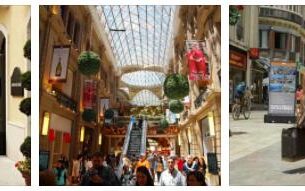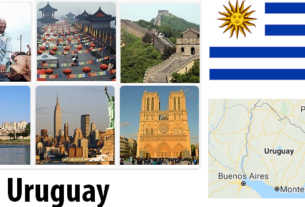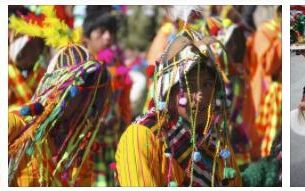How do you live in Venezuela? Are there “typical” Venezuelans? Probably just as little as there are typical Germans, but some things can then perhaps be generalized. For example, getting up early in Venezuela. School and work start early and by 7 a.m. everyone is often out of the house. By the way, at 6 p.m. it gets dark – all year round, because Venezuela is in the tropics.
In general, Venezuelans are friendly, helpful and open-minded. There is great solidarity in the family. You also meet more distant relatives regularly or you talk to them on the phone. Punctuality is not that precise. For appointments you don’t come at the specified time, but definitely a little later!
Because most parts of the country are warm to hot, all year round, you don’t need winter jackets or boots.
Sport and freetime
Football is a very popular sport and is simply played on the street whenever possible. Baseball is the national sport and the Chapita variant is also simply played on an outside court. You just take bottle caps and a broomstick! Chess and dominoes are also popular outside.
Venezuelans also enjoy going to bullfights in their free time. Especially popular is Coleo. Four riders fight to grab a bull by the tail and throw it to the ground.
Music also plays a major role in everyday life. It can be heard everywhere, at home, on the radio or even on the bus. Salsa and Merengue are popular dances that young people also dance at every opportunity.
A piñata, please!
Most families have a piñata on a child’s birthday. This is a colorful paper mache figure that is hung up. It’s filled with candy. Blindfolded, the birthday child and his guests take turns hitting the piñata with a stick until it rains candy. There is of course also a birthday cake. For fun they try to press the birthday child’s face into the cake…
Names in Venezuela
If you lived in Venezuela, as a boy you might be called Alejandro, Diego, Gabriel or Samuel. Girls are often called María, usually with a second name, i.e. María Alejandra or María Gabriela. Carmen, Ana and Rosa are also popular. You would have two surnames: one from your father and one from your mother. The most common surname in Venezuela is González, followed by Rodríguez and Pérez.
Eating in Venezuela
Food in Venezuela
What do you eat in Venezuela? In fact, there are some typical foods. These include arepas. These are round corn cakes. They are up to two inches thick. They are eaten as a side dish such as bread or filled with cheese, ham or fish as a main meal or snack in between. There can also be a sauce, for example guasacaca made from avocados (we know it more under the Mexican name guacamole).
Ingredients
Venezuelan cuisine contains ingredients such as corn and beans that the Indians used as staple foods centuries ago. But the Spaniards and other Europeans also brought food with them that have become indispensable today, such as rice or wheat flour. Plantains, yams, potatoes, tomatoes, onions, eggplant, pumpkin and zucchini are also widely used. A lot of fish and seafood are consumed on the coast. Not to forget the many fruits that thrive here: pineapples, melons, papayas, bananas, oranges or passion fruits, for example.
Pabellón criollo
The main national dish is pabellón criollo: it is made from rice, beef meat (fiber meat, carne mechada) and black beans. There are usually tajadas (fried slices of plantain) and a fried egg. Everything is then arranged on a plate as you can see in the photo. The colors reflect the colors of the flag: red is the meat, yellow is the bananas, blue is the (black) beans and white is the rice.
Soups: Sancocho and Mondongo
Soups are also popular. Sancocho consists of meat, tuber vegetables (such as cassava or potatoes) and vegetables such as corn or carrots. Depending on the meat, the soup is called, for example Sancocho de pollo, if it is prepared with chicken (pollo is chicken). Mondongo is prepared with offal and vegetables.
Cachapas, empanandas, casabe and tequeños
For cachapas, a dough is made from ground corn, milk, eggs and sugar. They are then fried like our pancakes and often eaten with cheese. This cheese is called here Queso de Mano, which means “hand cheese”. It’s similar to mozzarella that you may know. You can eat the cachapas as a starter or for breakfast.
Filled dumplings (empanadas) or arepas are other typical breakfast dishes. Cassava cakes are called casabe and are very thin and flat. For tequeños, a piece of cheese is fried in bread dough. They are a popular snack.
Hallacas
One thing should not be missing in Venezuela at Christmas: Hallacas (pronounced: Aljakas). In most other Latin American countries it is found under the name tamales. In both cases it is corn dough, which is colored and seasoned with annato and spread on a banana leaf. Then there are other ingredients such as meat and vegetables. Often they also contain olives, capers and raisins, and in some families boiled eggs. The whole thing is then wrapped, tied up and cooked. The hallacas are usually prepared by several family members together at the beginning of the Christmas holidays, sometimes up to 100 pieces. If the corn dough is mixed directly with the other ingredients, the smaller bollos are created.
Beverages
Chicha criolla (pronounced: Tschitscha kriolja) is a popular drink. It is made from rice and milk and often cinnamon is added. It is served ice cold. Papelón con limón is a lemonade. They are made from water, sugar in the form of panela (cooked sugar cane juice) and lemon juice. Fruit juices with water (Batidos) or milk (Merengadas) are also popular.



